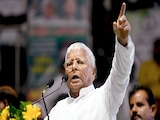This festive season, as we adorn ourselves with gold and silver, few realise that these precious metals were born in the fiery deaths of ancient stars - cosmic remnants scattered across the universe, now resting in our hands as ornaments of celestial history.
"We are, after all, made of stardust," says Professor Paolo Giubellino, former Scientific Managing Director of the Facility for Antiproton and Ion Research (FAIR) in Germany. In a world where gold is revered, gifted, and worshipped - especially during the Diwali period - this statement carries cosmic weight.
Yet, despite centuries of fascination, the true origin of gold remains one of the universe's most elusive mysteries. That's where FAIR comes in - a mega science experiment in Darmstadt, Germany, where India is not just a participant but a co-owner and a driving force.
FAIR: Bringing the Universe into the Lab
FAIR is home to a cutting-edge particle accelerator designed to recreate the extreme conditions found in stellar explosions, neutron star mergers, and supernovae. These are the very processes believed to have created heavy elements like gold, platinum, and uranium.
"We bring the universe into the laboratory," explains Professor Giubellino. "The processes at the base of the structure of the universe are mostly nuclear. Starting from the Sun's fusion to the death of stars, we recreate these in controlled conditions to understand how elements like gold came to be."
According to current astrophysical models, gold is not formed in ordinary stars. Instead, it is created during rare and violent cosmic events - neutron star collisions and supernovae - where temperatures and pressures are unimaginably high. These events scatter heavy elements across the universe, eventually seeding planets like Earth.
"Our gold and platinum come from mergers of neutron stars in some very remote locations in the universe," says Giubellino. "Our carbon and oxygen, of which we are made, come from sophisticated processes in the late life of giant red stars."
Despite advances in astrophysics, we still do not fully understand how gold is formed. FAIR aims to change that. By simulating cosmic conditions in the lab, scientists hope to unlock the secrets of nucleosynthesis - the process by which elements are formed.
"We can finally complement the information we get by looking at the universe with what we see in the lab," says Giubellino. "This will help us understand not just the origin of gold, but also processes that impact human life, like cancer treatment and astronaut safety."
FAIR is one of the largest scientific enterprises in the world, with a budget of Euro 3.3 billion. While parts of the facility are already operational, full-scale experiments are expected to begin by 2027.
India's Role In FAIR
India's involvement in FAIR is both scientific and strategic. As a founder-member, India has been contributing since 2005 through the Department of Science and Technology (DST) and the Department of Atomic Energy (DAE). The Bose Institute in Kolkata serves as the nodal institution coordinating India's participation, and Indian scientists are deeply engaged in FAIR's major experimental programs.
India is also supplying high-tech accelerator components - power converters, vacuum chambers, beam catchers, and diagnostic cables - as in-kind contributions to the facility.
"India is one of the owners and inspirations of FAIR," says Giubellino. "The way this facility looks is the brainchild of Indians."
Gold And India: A Cosmic Bond?
India is one of the largest consumers of gold in the world, importing over 99% of its needs. In 2024 alone, India imported more than 800 tonnes of gold, mostly for jewellery and investment.
The story of gold will also find an echo at the NDTV World Summit with Sachin Jain, Regional CEO, World Gold Council, speaking about 'The Timeless Hedge: Gold in the Age of Flux' on Friday.
Golden Thought for the Season
So, as you admire your gold jewellery this Diwali, remember: it's not just metal - it's star dust. Forged in the heart of dying stars, scattered across galaxies, and now resting in your palm, gold is a cosmic gift. And, thanks in part to India's role in FAIR, we're closer than ever to understanding its true origin.















